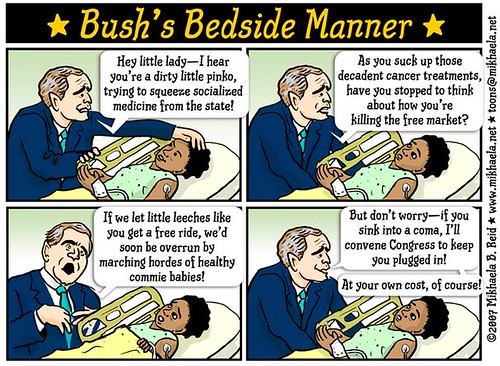
- Follow us on Twitter: @inthefray
- Comment on stories or like us on Facebook
- Subscribe to our free email newsletter
- Send us your writing, photography, or artwork
- Republish our Creative Commons-licensed content









Each issue of InTheFray features at least one story written or photographed by someone abroad. And one or two always concern matters in other countries and cultures. But this is, to the best of my recollection, our first issue in which every piece concerns life beyond U.S. borders or has been penned by someone living abroad.
We begin with two tales of war. ITF contributing writers Jonathan Jones and Anna Sussman start by bringing us another account of peacemaking in Africa. This time they visit Burundi and discover that the spirit of war haunts returning refugees. And they’ve accompanied their story with a podcast. Meanwhile, in Guatemala, Lianne Milton captures the struggle of three migrant women to find their way back to their mother and cousin in Los Angeles.And Anand Gopal goes to Beirut In search of the Paris of the East and finds that Lebanon has yet to recover from last summer’s war between Israel and Hizbullah.
On a lighter note, Sarah Lynch learns what it means to be Ghanaian when she works in a shack while studying abroad. Austrian poet Michaela A. Gabriel reflects on what October has in store: barren beaches, ghosts, long shadows, and more.
And Amy Brozio-Andrews reviews Andrea Levy’s Fruit of the Lemon and discovers just how difficult it can be to incorporate your ancestors’ identity into your own.
In other news, we’re excited to start bringing you Secret Asian Man six times a week beginning today. We’ve also launched a college newswire to complement our newswire. The college version includes articles of interest to college students and academics. Check it out at itf.newsvine.com.
If you enjoy reading these stories — or any others you’ve read in ITF — I hope you’ll consider donating during our annual Donor Drive. The past year has been an exciting time for InTheFray — we launched our new site at inthefray.org, our writers received national awards for excellence, and we expanded our content with a new section devoted to activist interviews and an eclectic assortment of articles from five continents. While we have made great strides in 2006-2007, we need your help to continue providing high-quality writing and photography on topics that matter. In the coming year, we plan to broaden our pool of talent by increasing the compensation paid to our contributors and staff. We will also raise awareness of the magazine through targeted marketing and advertising. We hope that you will join us in our mission to inspire conversations about identity and community, foster tolerance and unity, and help society come closer to a vision of justice, transparency, and opportunity for all people. Please support our efforts and visit inthefray.org/donate to make a donation. You can even use it as a tax write-off!
Laura Nathan
Editor
Buffalo, New York
"This soldier probably pushed Mr. Nagai first. This soldier then seemed to shoot him, judging from the angle of his gun."
— Koichi Ito, who previously worked for the special rapid attack squad of the Japanese police, speaking about the death of the Japanese journalist Kenji Nagai. Mr. Nagai was killed in Burma while filming the protests, led by Buddhist monks, on September 27th.
Protests — initially led by Buddhist monks who are now being confined to their monasteries after a series of crackdowns — have been demanding democracy and opposing the military junta for almost two weeks. Although the Burmese authorities claimed that Kenji Nagai, 50, a journalist experienced in working in danger zones and who worked for APF News, had been killed in the crossfire, Japan’s Fuji Television released footage in which Mr. Nagai appears to be pushed to the ground by a Burmese soldier and shot in the chest at point blank range. The footage shows Mr. Nagai grasping his camera as he lies dying on the ground as a crowd flees to escape oncoming soldiers.
I don’t care if you make $12 million dollars a year. I don’t care how well you think you can hold your liquor. There is NO excuse for drunk driving, ever, under any circumstances. And wracking up four arrests for it (the first in 1989, second in 1993, third in 2004, and last week’s fourth, which also violated terms of parole from the third) is unacceptable.
There are no personal reasons for my strong feelings towards drunk drivers. I’ve never been personally affected by it — never been hit by one, never lost a loved one in that situation. Yet, like many things in this world, the careless drunken attitude of "What are the odds?" or "I’m fine enough to drive" triggers rage in my head and my heart. "What are the odds of my killing someone, or even a whole family, by driving drunk?" Does it matter what the odds are? How can you live with yourself if you can shrug off even the possibility of harming another human being? We’re talking about being arrogant enough to get behind the wheel drunk and possibly end another human life. Four times. Apparently Sutherland learned nothing from Prison Break actor Lane Garrison’s drunken involvement in the death of a teenager last year.
The understandable public boycott of Mel Gibson after his arrest was due to his anti-semitic outburst. Of course, hate is also unacceptable and hurtful. But sadly, there are no boycotts of Hollywood blondes, male or female,Kiefer or Paris, who prove their above-the-law mentality and lack of respect for others. We shun the drunk who rants against another religion but not the one who could crash into your car and kill you or your child. Instead, the public will continue to worship these ex-cons, watch their TV shows, buy their calendars, and emulate their appearances (consider this sickening post by a fan absolving Garrison of full responsibility). Personally, I’m ashamed to share the world with the likes of them.